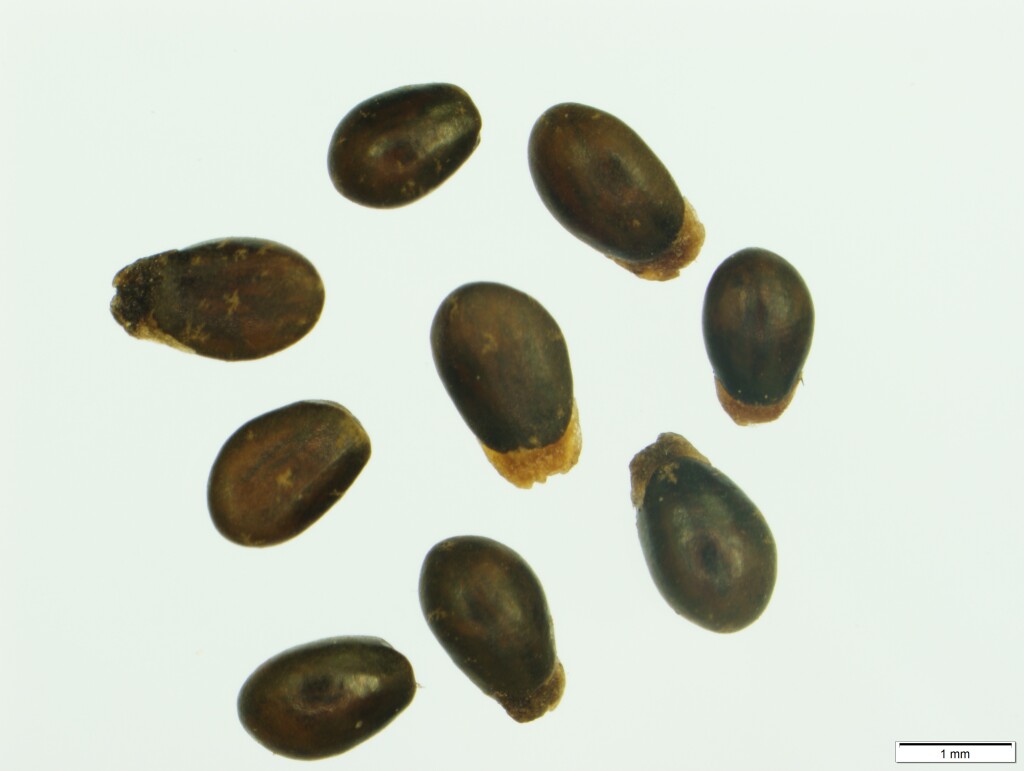Pomaderris costata
N.A.Wakef.Shrub to 4 m high; branchlets shortly and densely villous, with rusty simple and stellate hairs. Leaves ovate or elliptic, 25–50 mm long, 15–35 mm wide, obtuse, margin plane or weakly undulate, upper surface glabrous, lower surface densely pubescent with curved pale to golden simple hairs often c. obscuring the underlying stellate hairs, simple hairs on veins often rusty and subappressed; stipules 3–4 mm long, deciduous. Panicles c. pyramidal, 3–5 cm long; bracts deciduous. Flowers cream, externally villous with pale mid-dense simple hairs; pedicels 1.5–3 mm long; hypanthium 0.5–0.7 mm long; sepals 1.2–1.8 mm long, deciduous; petals absent; disc absent; ovary inferior, summit villous, style branched below midway. Operculum membranous, c. half mericarp length Flowers Oct.–Nov.
GipP, EGL, EGU. Also NSW. Rare, occurring in dry forest and shrubland, often in exposed rocky sites (e.g. Mt Coopracambra, Snowy River Gorge, Howe Hill) less commonly beside watercourses (e.g. near Orbost).
Walsh, N.G. (1999). Pomaderris. In: Walsh, N.G.; Entwisle, T.J., Flora of Victoria Vol. 4, Cornaceae to Asteraceae, pp. 85–109. Inkata Press, Melbourne.
 Spinning
Spinning

